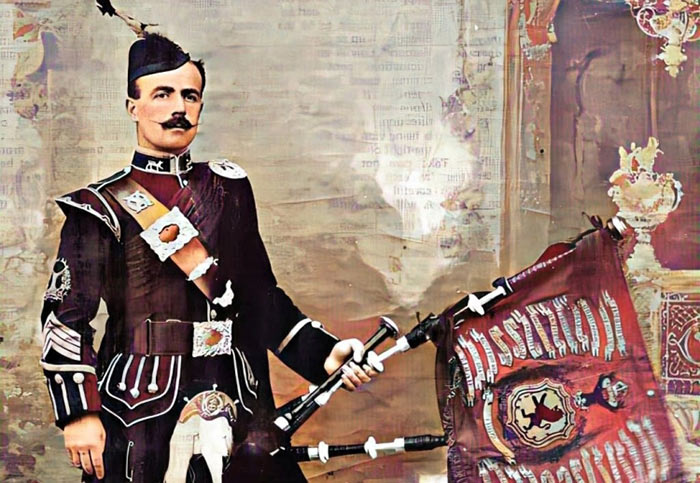
This is from a late 1970s article by journalist Alistair Campsie. Though often a controversial figure, Mr Campsie was a good writer. Some readers will know him through his entertaining but largely discredited book, ‘The MacCrimmon Legend: the Madness of Angus MacKay’. ….
Just over 50 years ago, one of the biggest funeral processions ever seen in Aberdeen jammed the city centre with 20,000 mourners, three pipe bands and a party of senior Army officers following the gun carriage drawn by six horses on which lay the coffin.
When the cortege reached George Street on the way down to the train station, the crowds surged so densely forward, the traffic was forced to a standstill. An astounded visitor asked if the King himself was being buried and a kilted piper turned to him and said: ‘Aye, min – the king of pipers’.
This was the start of the funeral of Pipe Major George Stewart McLennan, known affectionately throughout the piping world as ‘GS’, whose flying silver fingers had so enchanted Queen Victoria when he was only 10 years old that he had played by Royal Command before her.
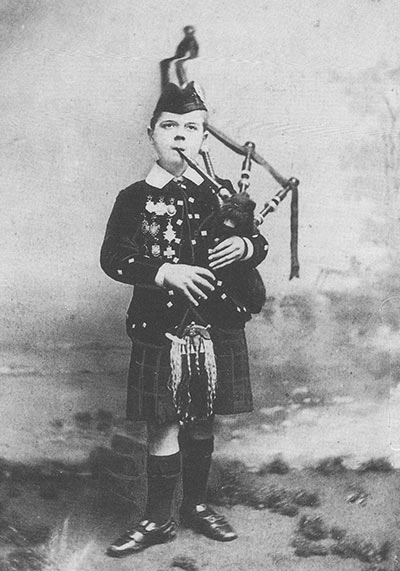
But he was also the composer of some of the most electrifying marches, strathspeys and reels and jigs ever written for the pipes; and so startling were his compositions that a leading Scottish writer christened him the ‘Stravinsky of the Bagpipe’.
Behind the gun carriage marched, among others Pipe Major G Findlater VC and P/M J Robertson of Banff who composed the famous ‘Farewell to the Creeks’… and these were only two among a host of brave and talented men.
The cortege came striking down the granite setts on to the station concourse, and as the six horses jingled and scliffed their massive steel-shod feet, the three bands struck up the sweet funeral air, ‘Lochaber No More’… the pall-bearers stepped forward and lifted the coffin from the gun carriage. Shoulder high they carried it into the station and gently lowered it into a special railway van which was to carry GS to his final resting place.
GS was that rarest of men, a child prodigy who never lost his magic or virtuosity as he grew into maturity. And he was too young to die when he did. He was born in 1884 and passed away in May, 1929, with a practice chanter in his shadowed fingers, trying to play one of the fantastic reels which he himself had composed.
GS was born in Edinburgh where his father was in the police. Father Ian [Lt John] was a piper….and young George was swiftly imbued with the mystique of pipes. He was entered into the competition lists at Paisley before his tenth birthday and played so well that he received the Royal Command to appear before the Queen.
In 1894 and 1895, young George won the amateur championship medal in Edinburgh and, with his fleet foot, also won the Scottish and English Highland dancing championships in 1895. Many champion pipers then also excelled in dancing.
He joined the Gordon Highlanders in 1899 as a boy of 14, already acknowledged as one of the country’s finest pipers. The Gordons were stationed in the south of England when he enlisted and he found it difficult to compete in the north.
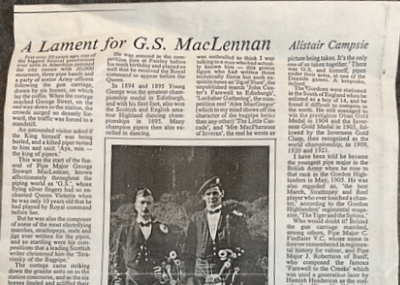
He still managed to win the prestigious Oban Gold Medal in 1905, followed by the Inverness Gold Clasp in 1909, 1920 and 1921. I have been told he became the youngest Pipe Major in the British Army when he rose to that rank in 1905 [aged 21].
[Despite lifelong ill health GS served in France during the First World War, where between actions he would make reeds and compose music.]
He was also regarded as ‘the best March, Strathspey and Reel player who ever touched a chanter’ according to the regimental magazine.
Who would doubt it?, this genius figure who had written those technically fierce but exquisite tunes, the ‘Jig of Slurs’, the unpublished march ‘John Center’s Farewell to Edinburgh’, ‘Lochaber Gathering’, the competition reel ‘Alex MacGregor’ [sic], the ‘Little Cascade’ and ‘Mrs MacPherson of Inveran’ the reel he wrote as a reward for hospitality.
Again the ageless lament ‘Lochaber No More’ was sounded at the graveside in Edinburgh as four Cameron Highlanders raised their pipes in the cemetery off Dalkeith Road.
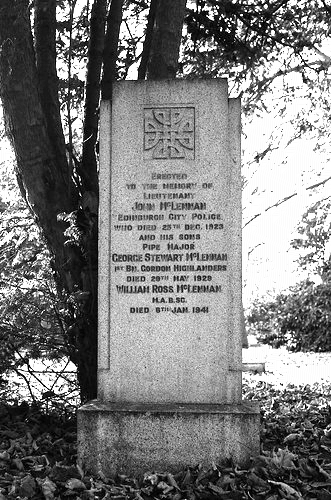
GS’s two sons George and John and his brother, dignitaries, brave comrades and the cream of Scotland’s pipers and dancers were there.
Then stepped forward his friend Robert Reid and through the summer air came the desolate, heart stopping, ‘Lament for the Children’, GS’s favourite piobaireachd. I am sure Bob Reid’s eyes were not dry that day.
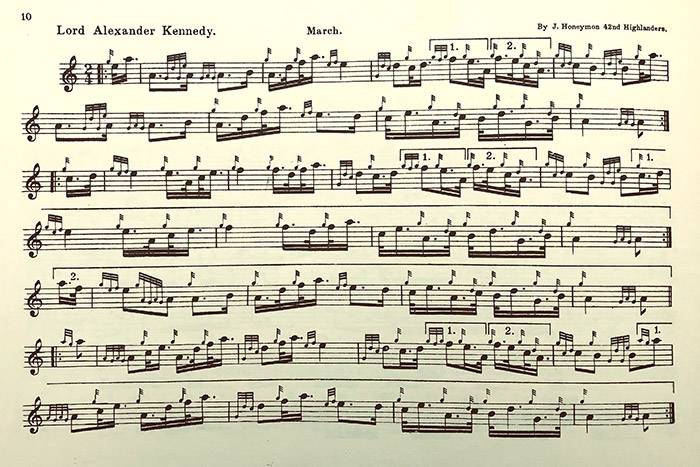




















Interesting mention there of an unpublished tune, John Center’s Farewell to Edinburgh. I wonder if it survives anywhere?
See also: http://www.gsmclennan.co.uk/
For those interested in the life of G.S. McLennan, there was an exhibition of his memorabilia held at the Theatre Royal in Hope Street, Glasgow (just across the road from the National Piping Centre) during the ‘Piping Live’ festival in 2011. I uploaded the two videos that I took at the exhibition. It was raining heavily outside and my orange jacket’s reflection is apparent in some of the scenes ! The videos include G.S.’s dirk, the plaid brooch given by Queen Victoria, his pipes (though I don’t think the Gortex bag is original !), many photographs and letters etc. with some background sounds of his music.
Here are the links:
https://www.youtube.com/watch?v=vOdCZ_m8rV4
https://www.youtube.com/watch?v=oswhXQ0Lxpg